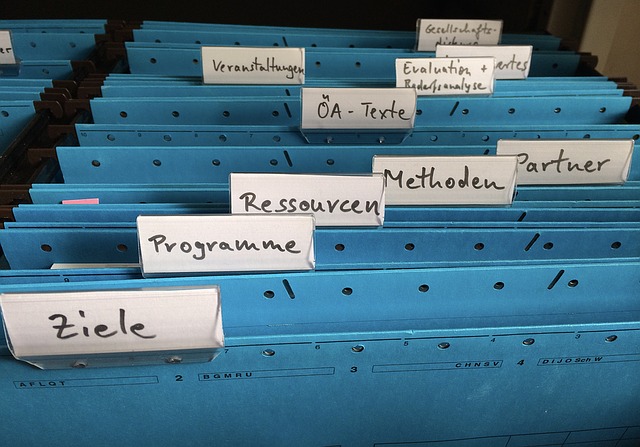การเขียน Classification Essay
การเขียนเรียงความแบบแบ่งแยกประเภท – CLASSIFICATION ESSAY
เมื่อความคิดหรือการกระทำถูกจัดแบ่งแยกประเภท โดยแบ่งออกเป็นกลุ่มหรือตามชั้น ซึ่งแต่ละกลุ่มต่างมีแหล่งข้อมูลและคุณภาพแบบเดียวกัน การโต้แย้งเกี่ยวกับเรียงความแบบแบ่งประเภทจะแบ่งตามสิ่งที่จะนำมาใช้ในการโต้เถียงหาเหตุผล โดยการระบุสิ่งที่จะทำการแยกประเภทออกเป็นกลุ่มหลักๆ ซึ่งเป็นขั้นตอนที่สำคัญมากเพื่อที่คุณจะแยกประเภทสิ่งต่างๆ ให้ถูกกลุ่มอย่างมีประสิทธิภาพ
เราสามารถนำตัวอย่างเพื่อช่วยในการอธิบายความสำคัญในแต่ละกลุ่มที่ใช้ในการเขียนเรียงความแบบจัดประเภท ทุกประเภทที่ถูกจัดในการแบ่งกลุ่มควรนำมาจากแหล่งเดียวกัน และควรแยกออกจากกลุ่มอื่นอย่างชัดเจน
การเขียนเรียงความแบบแบ่งกลุ่มควรมีการอ้างอิงหรืออธิบายลักษณะทั่วๆ ไป หรือกลุ่มย่อยที่คล้ายๆ กันเพื่ออธิบายเพิ่มเติมว่ากลุ่มย่อยแต่ละกลุ่มีความแตกต่างจากกลุ่มย่อยอื่นอย่างไร
Classification Essay
Purpose: To arrange things into categories.
Introduction: First, we need to give the topic and explain what our main categories will be or why we are classifying.
Body: Explain each category and give examples of things that fit into each category.
Conclusion: Summarizes and offers a final thought related to the reasons for the classification.
Language: Signposting to make the organization of the categories very clear.
Other considerations: It is a good idea to classify according to one clear principle. We should also have a similar number of examples for each category. Sometimes we leave the most important category to the end.
>>> สั่งงานเขียนกับ Native Writer งานคุณภาพ แกรมม่าเป๊ะ คลิก! >>>
ตัวอย่างการเขียน Classification Essay
Universities in the United Kingdom
Foreign students who wish to study for a degree in the United Kingdom have over one hundred universities to choose from. This can be a daunting challenge; students from overseas are often perfectly familiar with the concept of differentiating between well-known, highly-respected universities and institutions which are held in lower esteem, yet have limited knowledge of how British universities might be categorized. This essay will explain how the UK’s higher education institutes can be divided into three basic categories so that the reader might be better informed in making the decision about where to apply.
The first category comprises the old, traditional universities, the majority of which are now part of what is called the “Russell Group” universities. The Russell Group has 24 members and is an association of universities committed to raising standards and carrying out research. Examples of universities in this top tier are Oxford, Cambridge, the London School of Economics, Nottingham, Birmingham and Sheffield. Interestingly, a number of the Russell Group universities, including Manchester and Liverpool, were originally known as “red-brick universities” due to their locations in the industrial cities. The term was derogatory at first, but these institutions are now among the very best in the UK. The universities of the Russell Group all have very strong reputations and their graduates are highly regarded around the world.
The second group of universities can be referred to as the “plateglass universities” and came into existence around the time of the Robbins Report on Higher Education in the early 1960s, which recommended that the UK develop more universities. There are no precise numbers for this classification since the term is not definitive, but it could be argued that there are approximately 25 “plateglass universities”, including Aston, Brunel, Bath, Essex, Kent and Surrey. While Russell Group names are typically those of towns or cities, plateglass names are often those of counties, regions or districts of cities – although exceptions to this rule can be found. Institutions in this group are generally well regarded and rank highly on global assessments.
The final category is known as the “new universities”. These are institutions which were granted university status after 1992, when the government acted to increase the number of universities in the country. Some are entirely new, while others had previously existed as polytechnics or higher education colleges. There are at least 70 such creations, and in general, qualifications obtained from these universities are not considered in the same light as those from the older, established universities. Entry standards are typically much lower, and so are the international ranking positions. The names can often be confused with older universities in the same area; for example, Nottingham Trent, Sheffield Hallam, Oxford Brookes, Leeds Metropolitan, Liverpool John Moores, etc.
When foreign students are deciding where to apply to continue their studies in the UK, it is useful to be aware of the three main categories outlined in this essay. A UK university education is not cheap, with course fees for foreign students much higher than those for domestic students, while the cost of living in the UK for the duration of the course is also high. Therefore, it is important to be sure that the institution selected can meet the expectations of the student, and has the international reputation which can add weight to the qualification obtained. Thai students should bear in mind that the UK equivalent of Chulalongkorn is a Russell Group university. King Mongkut’s University of Technology might be plateglass, while the new universities probably equate to the Rajabhats.
>>> สั่งงานเขียนกับ Native Writer งานคุณภาพ แกรมม่าเป๊ะ คลิก! >>>



